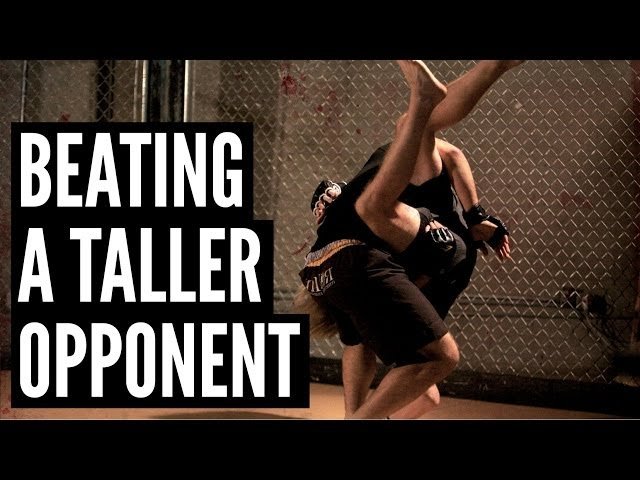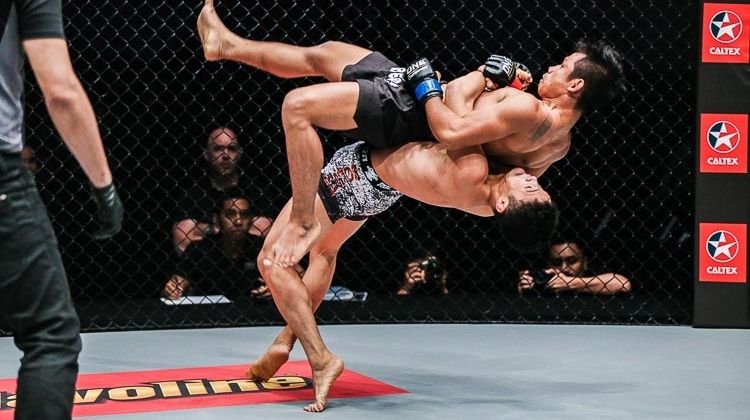In “Breaking Down Opponents: Advanced MMA Scouting Techniques,” you’ll dive into the world of mixed martial arts with expert strategies to outsmart your rivals. This guide offers you an inside look at how top fighters analyze their opponents’ strengths, weaknesses, and habits. With this knowledge, you can train smarter, prepare better, and step into the octagon with unparalleled confidence. Prepare to elevate your MMA game by mastering techniques that give you the upper hand in every match. Have you ever wondered what it takes to break down an opponent in Mixed Martial Arts (MMA)? If you’re an MMA enthusiast or an aspiring fighter, understanding advanced scouting techniques will transform your preparation and performance in the ring. In this friendly and informative article, you’ll learn powerful strategies to dissect your opponents’ strengths and weaknesses, ensuring you can step into the cage with confidence.

Understanding the Importance of Scouting
Before diving into advanced techniques, it’s essential to grasp why scouting is crucial. Knowing your opponent inside out can mean the difference between victory and defeat. Scouting allows you to:
- Identify Weaknesses: Discover areas where your opponent is vulnerable.
- Anticipate Moves: Predict the opponent’s strategy and be prepared.
- Maximize Your Strengths: Align your game plan to leverage your strengths against their weaknesses.
Tools and Resources for Effective Scouting
Video Analysis Software
The backbone of advanced scouting is video analysis. Software programs like Dartfish, Hudl, and Coach’s Eye offer detailed break-downs of fights. They allow you to pause, slow down, and annotate video clips so you can closely scrutinize the opponents’ movements.
Databases and Statistical Tools
Utilizing databases like FightMetric and Tapology provides valuable statistics on your opponent’s fight history, styles, and performance metrics. These tools give you an edge by revealing patterns and tendencies that may not be obvious at first glance.
| Tool | Description |
|---|---|
| FightMetric | Offers in-depth fight statistics and analysis. |
| Tapology | Comprehensive MMA fight database and rankings. |
| Hudl | Advanced video analysis and coaching platform. |
| Coach’s Eye | Allows slow-motion review and detailed annotation. |
Key Aspects of Scouting in MMA
Technical Skills
Examining the technical skills of your opponent is fundamental. Focus on their strengths and weaknesses in key areas:
- Striking: Evaluate their punching, kicking, and clinch work.
- Grappling: Assess their proficiency in takedowns, submissions, and ground control.
- Defense: Pay attention to how they defend against strikes and grapples.
Physical Attributes
Physical attributes can significantly impact how a fight unfolds. Consider your opponent’s:
- Height and Reach: These can influence striking and grappling strategies.
- Strength and Conditioning: Physical endurance and power are essential in both stand-up and ground battles.
- Agility and Speed: Quick reflexes and movement speed can be game-changers.
Psychological Profile
Understanding the mental makeup of your opponent can offer a competitive advantage:
- Pressure Performance: How do they handle high-pressure situations?
- Mental Toughness: Assess their resilience and ability to bounce back from setbacks.
- Behavioral Patterns: Study their body language and reactions during fights.
Advanced Scouting Techniques
Pattern Recognition
Identifying patterns in your opponent’s behavior and tactics is crucial. This involves watching multiple fights to spot:
- Repeated Combinations: Look for recurring strike combinations.
- Fight Initiation: How do they start exchanges? Do they prefer to counter or initiate?
- Grappling Set-Ups: Recognize how they set up for takedowns or submissions.
Opponent Tendencies
Focus on what your opponent tends to do under specific conditions:
- Under Pressure: Do they retreat, freeze, or become aggressive?
- Fatigue Responses: How do they cope with exhaustion?
- Preferred Techniques: What do they resort to when in trouble?
Game Planning and Simulation
Creating a detailed game plan based on your scouting is the next step. Work with your coach to develop strategies that exploit your opponent’s weaknesses while rounding off your strengths. Simulating fight scenarios can help:
- Rehearse Strategy: Practicing your game plan in controlled settings ensures familiarity.
- Reaction Drills: Prepare for the opponent’s likely responses to your techniques.

Implementing Scouting Insights into Training
Tailored Training Regimens
Customized training based on scouting insights leads to focused improvement. For example:
- Striking Training: If your opponent has poor head movement, work on precision striking.
- Grappling Enhancements: To counter strong takedown artists, sharpen your sprawl and clinch defense.
- Conditioning: If your opponent fades in later rounds, focus on endurance training to outlast them.
Mental Preparedness
Include mental conditioning as part of your preparation:
- Visualization: Picture yourself executing your game plan successfully.
- Stress Drills: Simulate high-pressure situations where you must think and act under duress.
Sparring Partners Mimicking Opponent
Having sparring partners imitate your opponent’s style and tendencies during training is invaluable. This simulation gives you a tactile sense of what to expect, honing your reactions and strategies.
Regular Updates and Continuous Improvement
Opponent scouting is not a one-time activity but a continuous process. Keep updating your strategies and techniques by:
- Watching New Fights: Opponents can evolve, adapting new skills or strategies.
- Re-evaluation: Regularly reassess your own skills and conditioning.
- Feedback Loop: Develop a feedback mechanism with your coach to keep improving.

The Role of Technology in MMA Scouting
Wearable Tech and Biomechanics
Wearable technology and biomechanics provide a new layer of data for scouting. Using devices like heart rate monitors, GPS trackers, and motion sensors can:
- Track Performance: Measure speed, power, and endurance during training.
- Analyze Movements: Assess the efficiency of your movements and techniques.
- Injury Prevention: Monitor strain indicators to avoid injuries during intense sessions.
Augmented Reality (AR) and Virtual Reality (VR)
AR and VR are cutting-edge techniques being used in advanced scouting and training:
- Virtual Simulations: Practice against a virtual avatar of your opponent.
- Enhance Visualization: Gain a 3D perspective on fight dynamics and spatial awareness.
Common Mistakes to Avoid in Scouting
While scouting is highly beneficial, some common pitfalls can undermine your efforts:
Over Analysis
Be cautious of over-analyzing and becoming paralyzed by too much data. Trust your instincts and findings to strike a balance between information and action.
Neglecting Self-Assessment
Don’t focus solely on your opponent. Regular self-assessment ensures you address your weaknesses and capitalize on your strengths.
Ignoring Mental Preparation
Physical and technical readiness is crucial, but always bolster it with mental preparation. Overlooking the psychological aspects can leave you vulnerable.

Making Adjustments Mid-Fight
Even with the most thorough preparation, fights are unpredictable. Be prepared to make adjustments mid-fight based on:
- Opponent’s Adaptation: If they counter your pre-fight strategy, have Plan B and C ready.
- Fight Flow: Adapt to the changing dynamics and momentum of the bout.
- Corner Advice: Listen to your corner’s insights and feedback during breaks.
Developing a Scouting Team
Building a team dedicated to scouting can provide diverse insights and perspectives. Your team might include:
- Head Coach: Oversees the overall strategy and training adjustment.
- Assistant Coaches: Focus on specific areas like striking, grappling, and conditioning.
- Analyst: Specializes in breaking down fight footage and statistics.
- Psychologist: Assists with mental preparation and resilience training.
Effective Communication
Ensure seamless communication among your scouting team members to synchronize efforts and provide cohesive guidance.

Summary
By now, you should have a comprehensive understanding of advanced MMA scouting techniques. Effective opponent breakdowns involve:
- Utilizing Technology: Leverage video analysis, databases, and wearable tech.
- Detailed Analysis: Focus on technical, physical, and psychological aspects.
- Continuous Improvement: Regularly update and adapt your strategies.
Your ability to meticulously study and strategize against opponents can significantly enhance your chances of success. Remember, every fight is a learning opportunity – both in victory and defeat. Stay curious, stay diligent, and keep improving. Happy scouting, and best of luck in your MMA journey!
